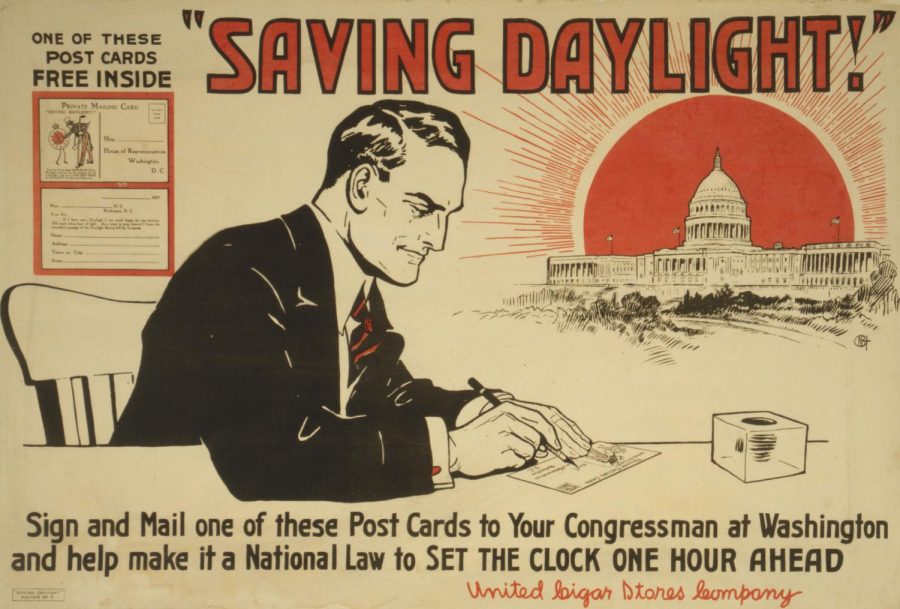The Law of Daylight Savings Time
By Eva Dailey
Benjamin Franklin was the first to conceive the idea of Daylights Savings Time in Paris in 1784. The premise behind this century old practice was simple; how do we get the most out of a day in both the winter and summer months? The solution: move an hour in the morning to the evening, making the day “longer” in the summer. It would be nearly 150 years before Franklin’s idea caught on as Williams Willet, a British builder, took up the cause in the early 1900s, believing the early light hours of morning to be wasted in the spring and summer. Starting in 1916 following WWI, countries around the world began to adopt “summer time”, with the full benefits being truly realized during WWII (then known as “war time”), saving precious energy during the conflict. The US had adopted it in 1918 as the means to both preserve daylight and set a standard time for the country. However, by 1919 whether to observe it or not was left up to the states.
Opinions on Daylight Savings in the states have varied over the years. As of 2019, 48 of the 50 observe it, while Arizona and Hawaiians the only states who do not. Up until 1967 they followed suit, changing their clocks with the rest of the country, but their reason for abandoning the practice was as practical as the original idea behind it. The purpose is to save daylight. Hawaii is located south of the Tropic of Cancer, less than 30 degrees from the equator, i.e., the state gets somewhat equal sunlight year round. Changing the clocks just doesn’t make sense for them. Arizona followed their example in 1968, also citing plenty of sunlight as the reason behind their decision. As a desert state, they also pointed to cooler hours in the morning and evening as a supporting factor. Puerto Rico, Guam, the Virgin Islands, American Samoa, and Marina Islands agree with Hawaii, citing similar reasons.
But Vermont isn’t Hawaii. In the winter here, nights get dark early and mornings get light late. Yet despite the difference in key sunlight hours, the 2019 Vermont legislature includes a bill known as H.10, proposing that the state follows the latter’s example. Representative Samuel Young of the Orleans-Caledonia district introduced this bill, suggesting that the state makes daylight savings time year round; no more falling back in autumn or leaping forward in the spring, designating Vermont’s time as “U.S. Eastern Daylight Saving Time”. Though the bill is not yet on the legislature’s calendar, H.10 is in-keeping with an ongoing trend. According to the New York Times, at least 31 states are debating the issue of Daylight Savings Time and it’s relevance in the 21st century.
As stated, the Germans were the first to adopt the time change in 1916, in the midst of the First World War in order to preserve fuel. But in 2019, Daylight Savings Time proves to be more detrimental to modern life than beneficial. This is at least Representative Young’s argument. He posits that the current time system does not make any sense as more light in the morning does not benefit anyone; support from farmers is a myth as they do not rise with the clock but “with the cows”. On the other hand, staying an hour ahead year round would allow people in the winter to leave work when it’s still light outside. This would enable better driving conditions and increase the likelihood of people stopping on the way home and doing a bit of shopping before twilight descends. Young makes a valid argument. In the 1920s, following the U.S.’s adoption of Daylight Savings Time in 1918, businesses in New York City and Boston noticed a pointed increase in sales in the Summer after five o’clock, as shoppers were more willing to step into a store before sunset than they were after.
On March 10th, H.10 went to Vermont’s House General Committee. The bill is not expected to go anywhere, but if it does it will have to receive approval from Congress, as well as from the U.S. Department of Transportation. With other New England states like Massachusetts, Maine, and New Hampshire attesting to pass similar laws, the bill’s chances look a little better.
For more information on the health benefits to changing Daylight Savings Time in Vermont, check out Shea’s Health Corner: the Pros and Cons of Daylight Savings Time.
Photo belongs to Whimquarterly.com







